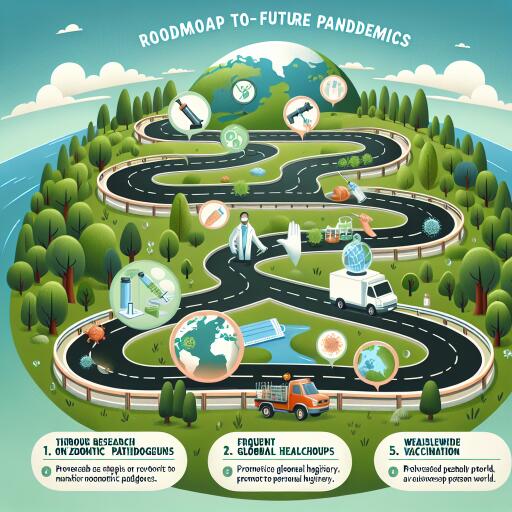
A New Road Map Shows How to Prevent Pandemics
The intricate web of life on our planet has many paths less trodden, ones that if left undisturbed, could safeguard humanity from the brink of future pandemics. A pivotal study disclosed in Nature Communications on March 26 unveils how maintaining the sanctity of ecosystems could be our best defense against the zoonotic spillover—the dreaded leap of viruses from wildlife to humans.
This groundbreaking initiative outlines strategies to uphold or rejuvenate animal habitats and curtail human interactions with wildlife within more urbanized spaces. The unsettling truth is that most emerging infectious diseases, including the notorious COVID-19 and HIV, originate from such zoonotic spillovers. Animals under duress from habitat destruction or scarcity of food are more prone to viral infections, potentially amplifying the spread of these viruses.
Reiterating the cost-effectiveness of environmental conservation as a pandemic preventive measure, the study brings fresh insights based on bat-borne zoonotic cases. It details how specific ecological imbalances, such as winter food shortages, drove fruit bats in eastern Australia into closer quarters with human settlements, leading to the transfer of Hendra virus to both horses and humans through indirect contact.
Raina Plowright, a distinguished disease ecologist, emphasizes the clarity that understanding the mechanism of spillover brings to devising effective solutions. In southeastern Queensland, a trial aims to avert Hendra virus outbreaks by replanting crucial flowering trees, showcasing how minimal ecosystem adjustments can yield significant health benefits.
Iroro Tanshi, another voice in the discourse, highlights the importance of safeguarding natural spaces and minimizing direct contact with wildlife. In Nigeria, her work involves mobilizing communities to prevent anthropogenic forest fires and sourcing alternatives to bat hunting, demonstrating a practical approach to reducing zoonotic transmission risks.
Although the focus of this initiative is heavily on bats, known to carry several potential public health threats, the proposed measures are applicable to a broader range of animals that could harbor viruses. Winifred Frick, a chief scientist, points out that this strategy is not only about preventing animals from transmitting viruses to humans but also about safeguarding wildlife from human-borne pathogens.
A companion study in Nature Ecology & Evolution underscores the bidirectional nature of zoonotic transmission, revealing that humans are more often the source of viruses in animals than vice versa. This continual viral exchange underscores the importance of ecological measures in curbing the zoonotic spillover.
Plowright advocates for a dual investment strategy that focuses on biomedical advancements while equally emphasizing ecosystem preservation to prevent initial spillovers. A critical recommendation includes limiting road construction into untouched natural areas, which often leads to habitat destruction and increased human-wildlife interaction, thus elevating pandemic risks.
The call to action extends beyond just the scientific community to policy makers and public health officials, urging them to proactively study zoonotic spillovers and develop preventive strategies before another virus evolves into a global health crisis. Understanding each spillover as a learning opportunity can lead to the development of viable solutions that prevent pandemics at their source, ensuring a healthier future for both our species and the ecosystems we inhabit.





Leave a Reply